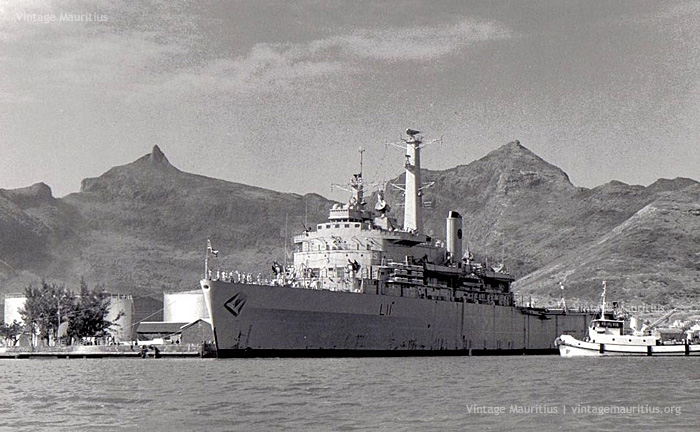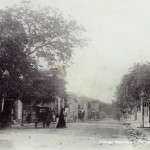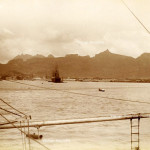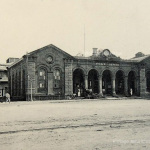
HMS Intrepid in Port Louis Harbour – 1970s
HMS Intrepid was one of two Fearless class amphibious warfare ships of the Royal Navy. A Landing Platform Dock (LPD), she served from 1967 until 1999. Based in HM Naval Base, Devonport, Plymouth, Devon and HM Naval Base Portsmouth and saw service around the world over her 32 year life.
In the process of being decommissioned for sale, she was rapidly returned to service to sail as part of the British operation to retake the Falkland Islands after the Argentine invasion in 1982. She landed troops in amphibious assaults on the Islands and the Argentine surrender was signed on her deck at the conclusion of the Falklands War.
Intrepid was the second of her class of purpose built LPDs used by Royal Navy, built in Clydebank, West Dunbartonshire, at the John Brown & Company yard she was launched in 1964 before undergoing trials and commissioning in 1967. She was the last ship built by John Brown & Co for the Royal Navy.
Intrepid became the first Royal Navy warship to be fitted with satellite communication equipment in 1969. As a result of defence cuts, Intrepid went into reserve in 1976, being brought back into active service in 1979 to allow Fearless to be refitted.
It was announced in 1981 that the two LPDs were to be deleted, with Intrepid undergoing decommissioning in 1982 at the outbreak of the Falklands War. After decommissioning, the Royal Navy were due to sell Intrepid to Argentina.However, Intrepid was brought back into commission, with her ship’s company recalled by Commander Bryn Telfer (the Executive Officer), and Malcolm MacLeod, the crew gladly returned to form part of the task group committed to Operation Corporate, the British effort to recapture the islands. Intrepid was commanded by Captain Peter Dingemans.
She Intrepid would be the last ship to arrive, the last piece in the jigsaw, and so all the timings depended on her.
As well as being one of the warships used for imprisoning the Argentinian prisoners of war, the surrender ending the Falklands conflict was signed on Intrepid’s deck.
Intrepid was refitted at Devonport Royal Dockyard between January 1984 and June 1985,with two Sea Cat launchers removed, with twin 30 mm anti-aircraft mounts and two single 20 mm cannon added. From June 1985 until 1990 she supported the sea training phase of initial officer training, undertaken at Britannia Royal Naval College, as part of the Dartmouth Training Squadron.
Decommissioned
Intrepid was placed in reserve status late in 1990, when Fearless completed an extensive refit. Intrepid was in poor physical condition by this time, which prevented a similar upgrade, and was laid up at HM Naval Base Portsmouth.Intrepid was used as a source of spares for her sister ship, HMS Fearless. She was decommissioned in 1999 and awaited her disposal, by scrapping, in Fareham Creek, Hampshire.
Replacement LPDs were ordered during the 1990s with HMS Albion being commissioned in 2003.
On 12 February 2007, the MoD announced that HMS Intrepid is to be recycled at a British facility. Leavesley International was selected as the preferred bidder, pending license acquisition. The contract aims to ensure that the ship is disposed of responsibly, and in full compliance with international environmental legislation.
Having received the required planning permission and environmental licences for disposal, Intrepid duly left Portsmouth for her final journey to Liverpool on 13 September 2008. Having been previously suggested as potential diving site on the southcoast, various veterans of the Falklands War started a petition on the 10 Downing Street website to preserve the ship as a memorial to the conflict. But in late January 2009, the Daily Mail published an article showing the half demolished ship in Liverpool Docks, which was reported to be on target to be 96% recycled.
HMS “Intrepid” called at Port Louis in July-August 1970
Source: Wikipedia





